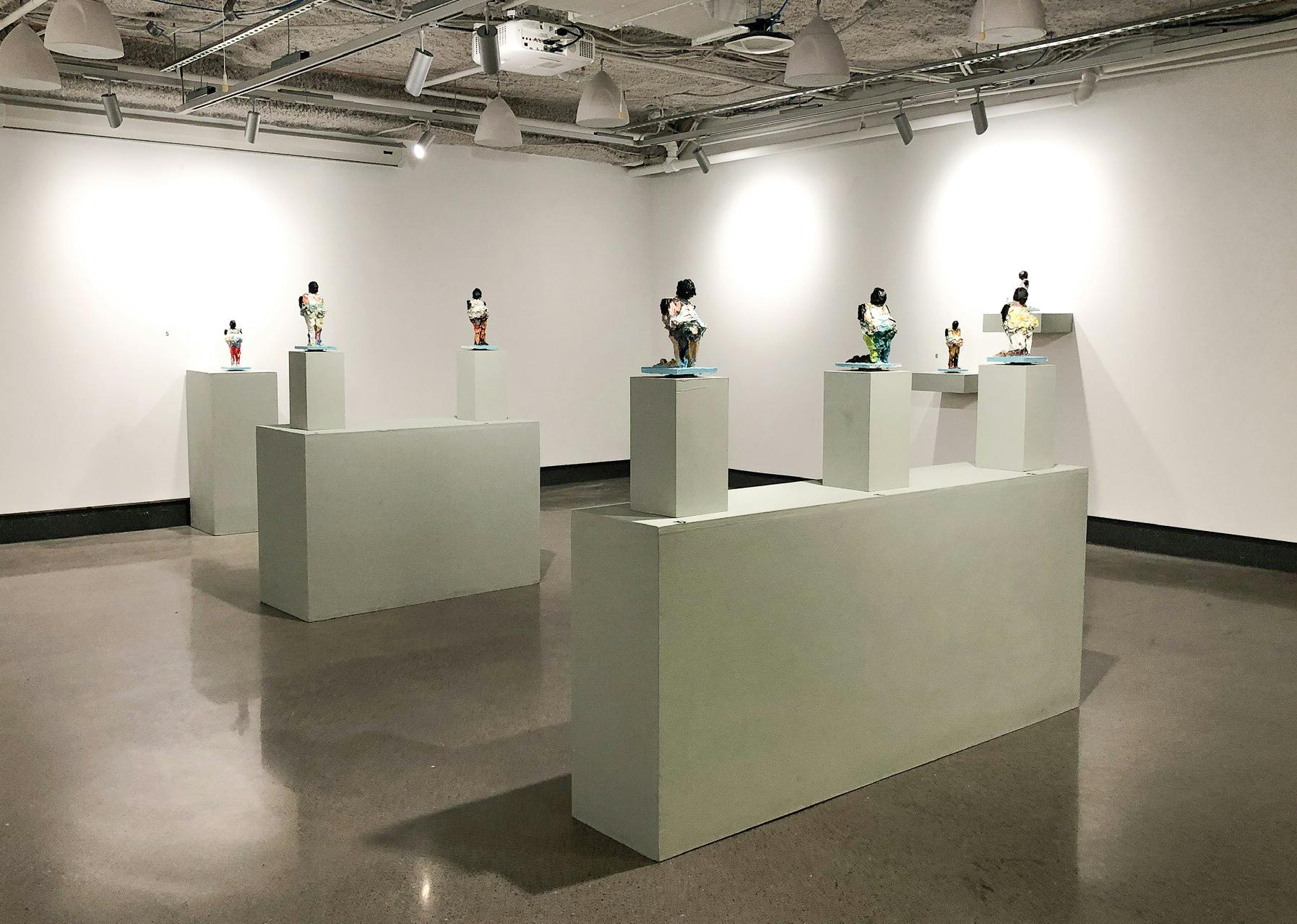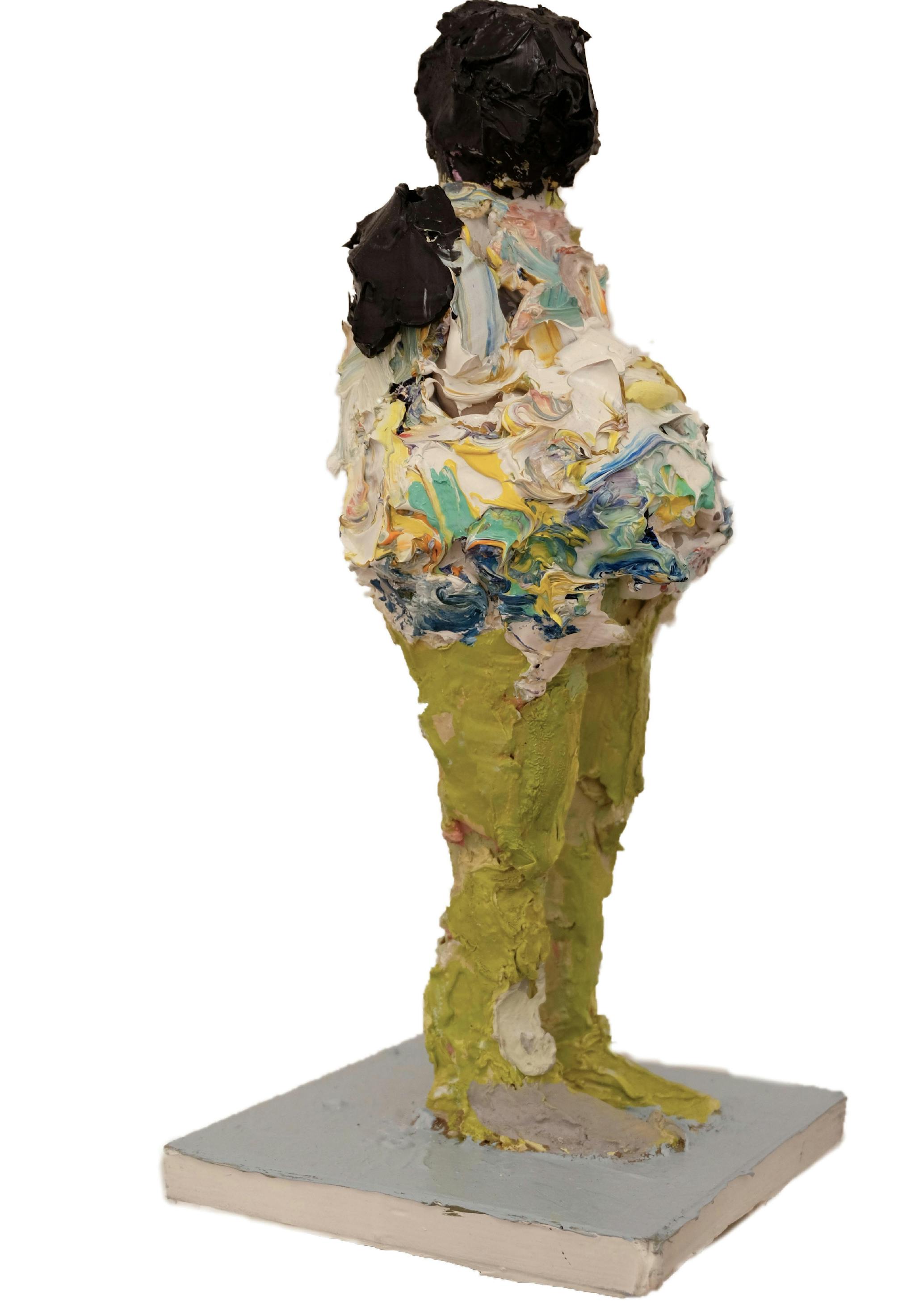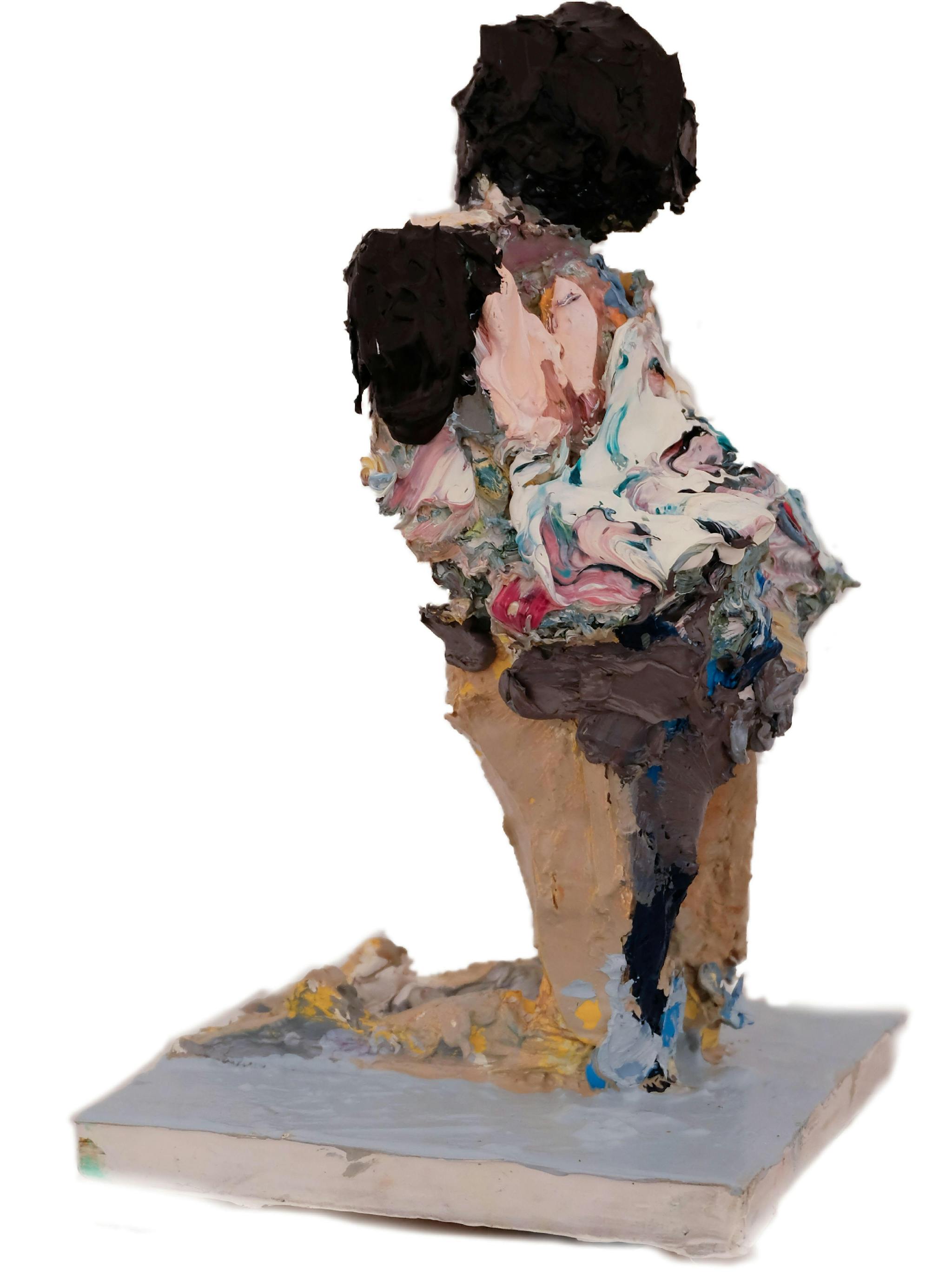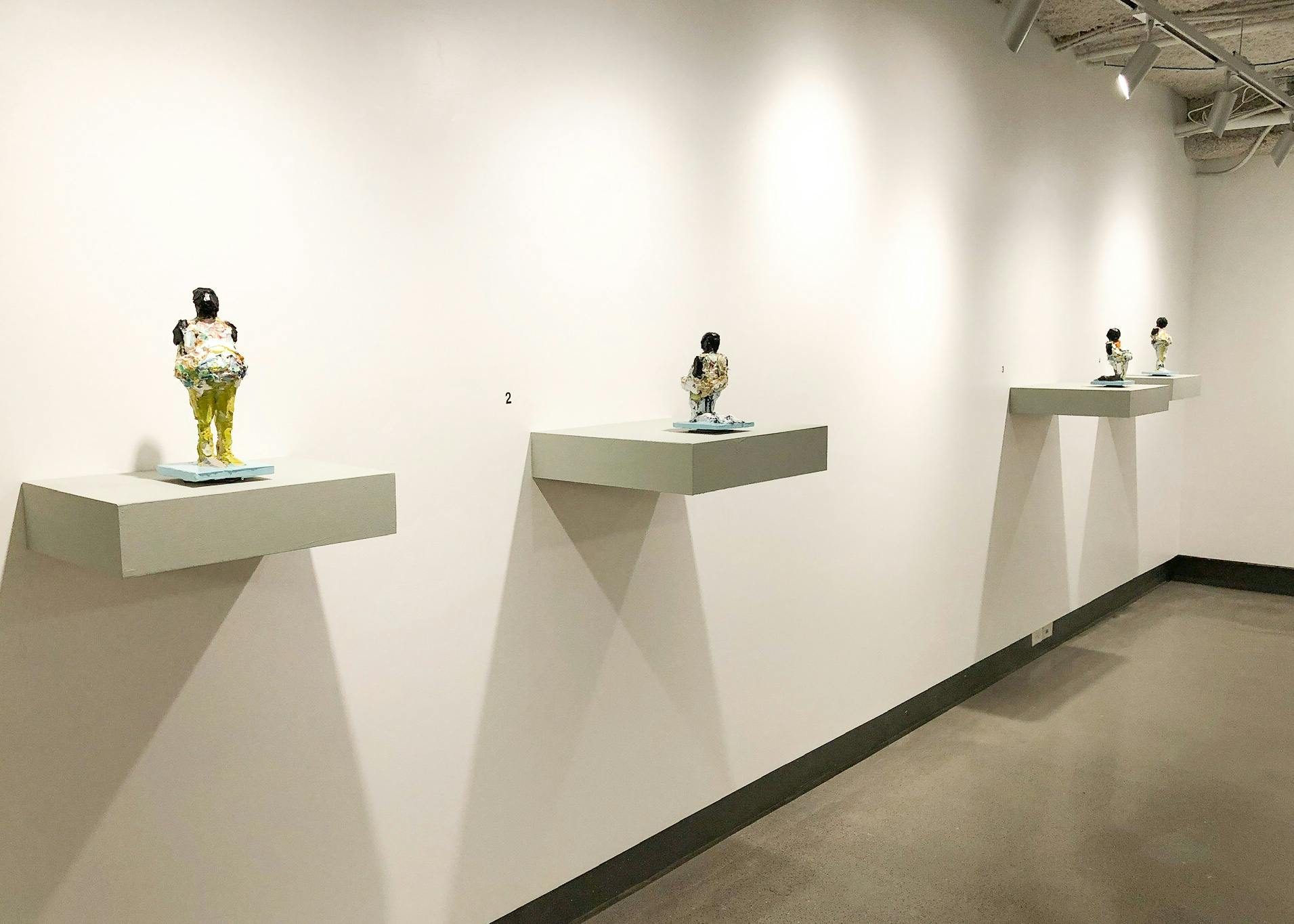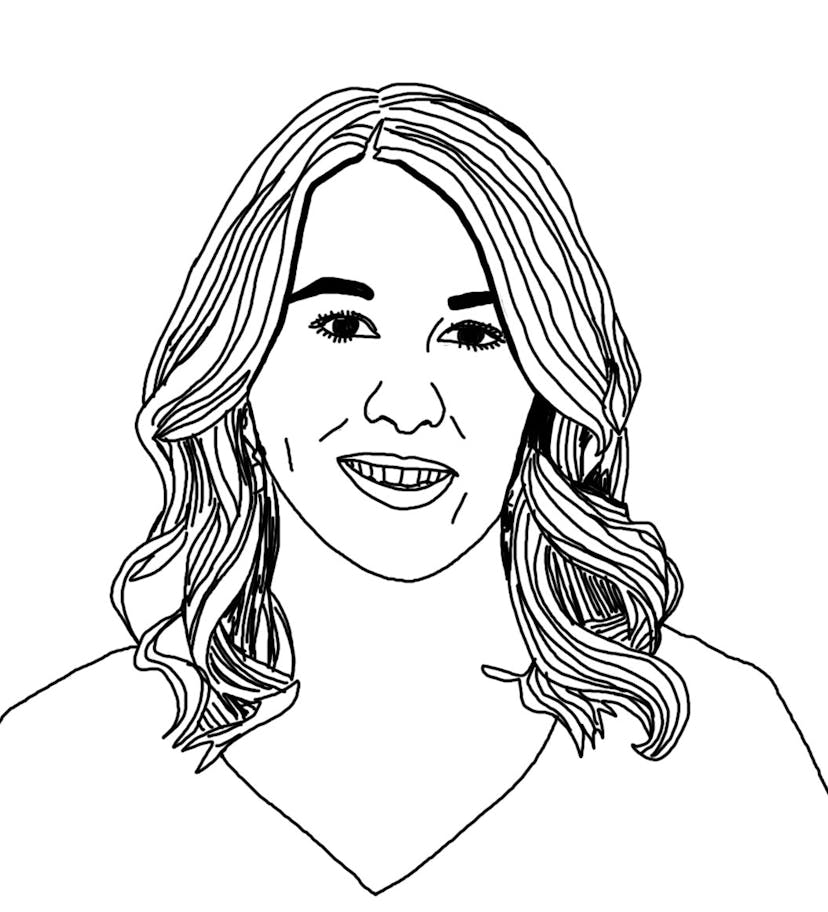Lavaughan Jenkins’ recent work began with a dream about twentieth-century painter, Philip Guston.
“I had a dream where Philip Guston knocked on the door of my studio and asked me if I was ready for a crit. He told me it was time to stop limiting myself with borders and edges. Take away the edges and you can paint forever—a continuous painting you can view from different angles.”
I recently sat down with Jenkins before the opening of his solo show, “Materials Matter 1,” at Suffolk University Gallery. On the heels of being named a recipient of the ICA/Boston James and Audrey Foster Prize, “Materials Matter 1″ offers a glimpse into what the artist has been bringing to life with paint in his studio over the past few years. While “Material Matters 2″ will be a group show featuring Jenkins work in dialogue with other contemporary painters, the first iteration is comprised of over a dozen figural paintings posed stoically in the single-room gallery.
Though at first glance the figures appear to be painted sculptures, Jenkins is clear that they are, in fact, paintings. “One reason I use oil paint is to help tie it back to what a painting is. [These figures] are my two dimensional paintings ripped off the wall, put into real life. The transition from flat to dimensional lets me explore the possibilities of what paint can do,” he explains.
They are curious characters, small in size, none standing or kneeling taller than about a foot, and are arranged like a miniature army throughout the gallery. Their swirling, multicolored torsos and equally bright legs contrast against their jet black heads and arms. The rounded torsos, where Jenkins concentrates bright pigments, are built of layers of paint that look both gesturally and carefully applied. A single figure can simultaneously contain blobs of paint, as if applied directly from a tube, and delicate brush marks, creating a sense of chaos that compels us to keep looking–and perhaps even tempts us to touch.
Like people in a dream, the figures are simultaneously mysterious and vaguely familiar. Their familiarity may stem from the fact that Jenkins is an avid student of art history, blending influences from sources as distinct as Goya, Sam Messer, ancient Egyptian art. In form, they are reminiscent of the “Venus of Willendorf,” though within moments of chatting it becomes apparent Jenkins’ muses are as multilayered as his paintings. Jenkins finds inspiration all around him, including in fashion and music, even referencing Kendrick Lamar’s 2016 album, “untitled unmastered” as an inspiration for titling his works “Untitled.”
Jenkins’ journey to abandoning the traditional canvas started nearly four years ago when he saw the MFA Boston’s exhibition, “Goya: Order and Disorder.” Calling it his “wake up call to get back into art,” Jenkins cites Goya’s “The Third of May 1808″ as a major point of inspiration. It seems one of the biggest draws for Jenkins about the work of Goya and others, including Sargent and Manet, is a painting’s ability to create atmosphere and facilitate a story––but this fascination also reveals the limits of two dimensional painting. “As viewers, we’re only allowed this one view,” he states. “But what if you could take a walk through it? You can imagine doing it, so I thought, ‘why not create it?’”
Like many of us, he is a collector of life events and moments of inspiration, but the manner in which all of this comes to life in his studio is uniquely his own. The layers of paint act as layers of details in a story behind each figure.
Though his work draws from these points of inspiration, his own memories and dreams are a driving force behind the figures in “Materials Matter 1.” “Most of my work is based off of what happens in my dreams, so when I wake up in the morning, I have to get it done,” Jenkins notes. “These figures, in a sense, came from the book, “Man Walks into a Room” [by Nicole Krauss]. They’re the watchers, the doctors, in Nicole’s book, extracting memories,” he explains, citing a moment earlier in his career when he met Krauss while in Yale University’s Norfolk Residency Program and the author and artist realized their work was two sides of the same coin.
“It’s things that I’ve forgotten, people that I’ve forgotten…creating these paintings allowed me to retrace my footsteps and recover things that don’t necessarily have relevance in my life right now, but that got me into the position I’m in today. There are good stories, bad stories, bad relationships, family issues. Each of these figures carry all of that in one vessel, which is why their bellies are so chaotic,” Jenkins recounts. His intuitive approach to the figures means that they are almost guaranteed to change over time. He mentioned that there were even a couple he would have continued working on that day if he had brought his materials to the gallery.
Moving away from two dimensional work is also a way of exploring the boundaries, or lack thereof, of paint. While we are limited in our interactions with paintings in a gallery or museum setting, within his studio, Jenkins dives into all of the possibilities paint can become, playing with texture, color, and shape, doubling down on the material properties of the medium.
“Additive and subtractive go hand in hand,” he says, noting that he uses whatever he deems useful and necessary to achieve the desired result. Sometimes, “that’s with q-tips, or syringes, sometimes spoons…I scoop a big chunk of paint, just like you would ice cream, and see how it spills over, reacts, and holds. Rarely do I use a brush in the early stage of painting, but sometimes I will,” he adds, cheekily explaining that this is usually a technique he uses to appease those who may think he needs a brush to paint.
In this pivotal dream, Guston told him “‘Eliminate the borders, don’t limit yourself to a particular shape that stops on the edge. Being an artist gives you a freedom—why put yourself in a box?’” Once Jenkins abandoned the edges and borders of a canvas, he became free to explore the materiality of paint in a way that truly felt right to him. Moving past the limits of two dimensions allows the paint to be an extension of Jenkins’ creativity itself.
Jenkins sees this move from two to three dimensions as a challenge to traditional norms in painting, allowing viewers to question the very nature of what they categorize as painting, and an evolution in his own style. He notes that he is not alone in challenging the status quo, mentioning contemporary artists like Susan Carr and Kevin Beasley as pushing the painting envelope in a different direction. Yet, perhaps because this work is intrinsically so personal, he views this departure as his own—with a little push from Goya and Philip Guston.
“Materials Matter 1” is on view at Suffolk University Gallery through November 27, and “Materials Matter 2″ follows from December 4 through January 22, 2019.
